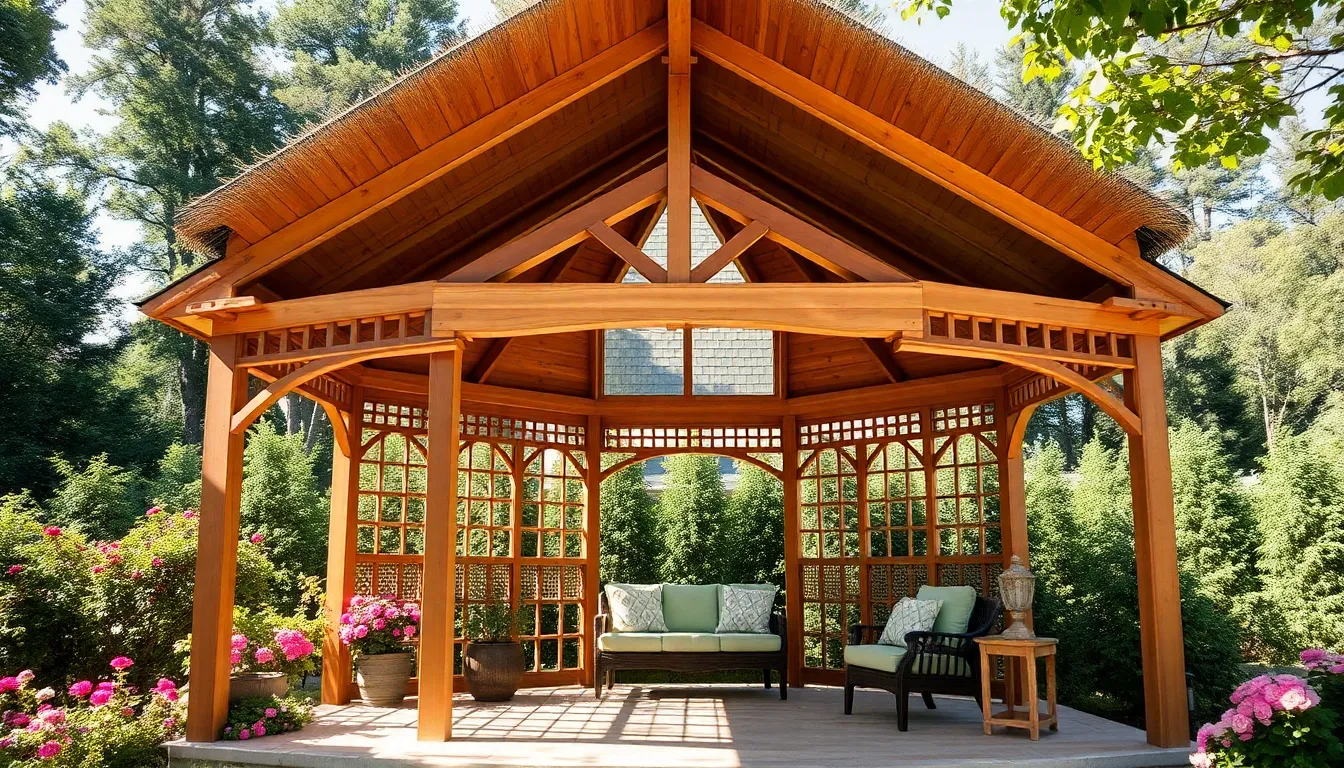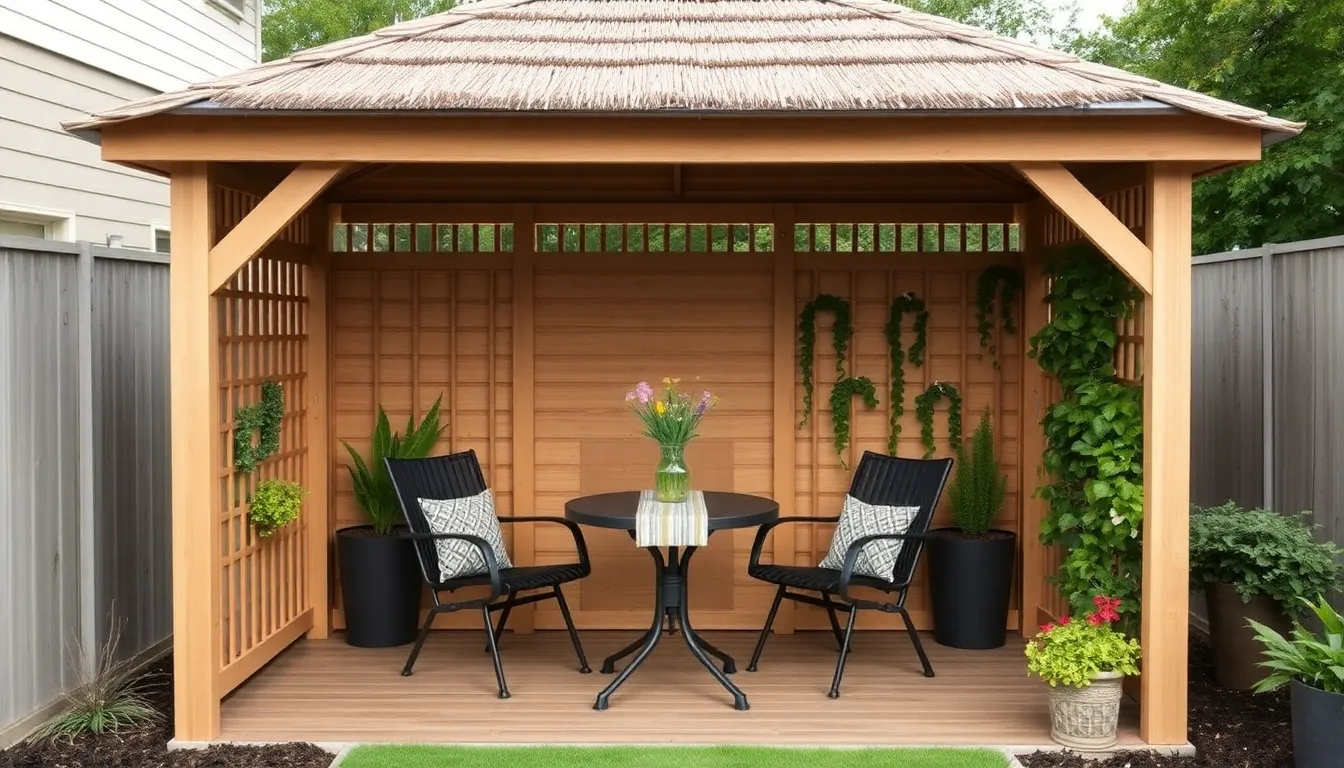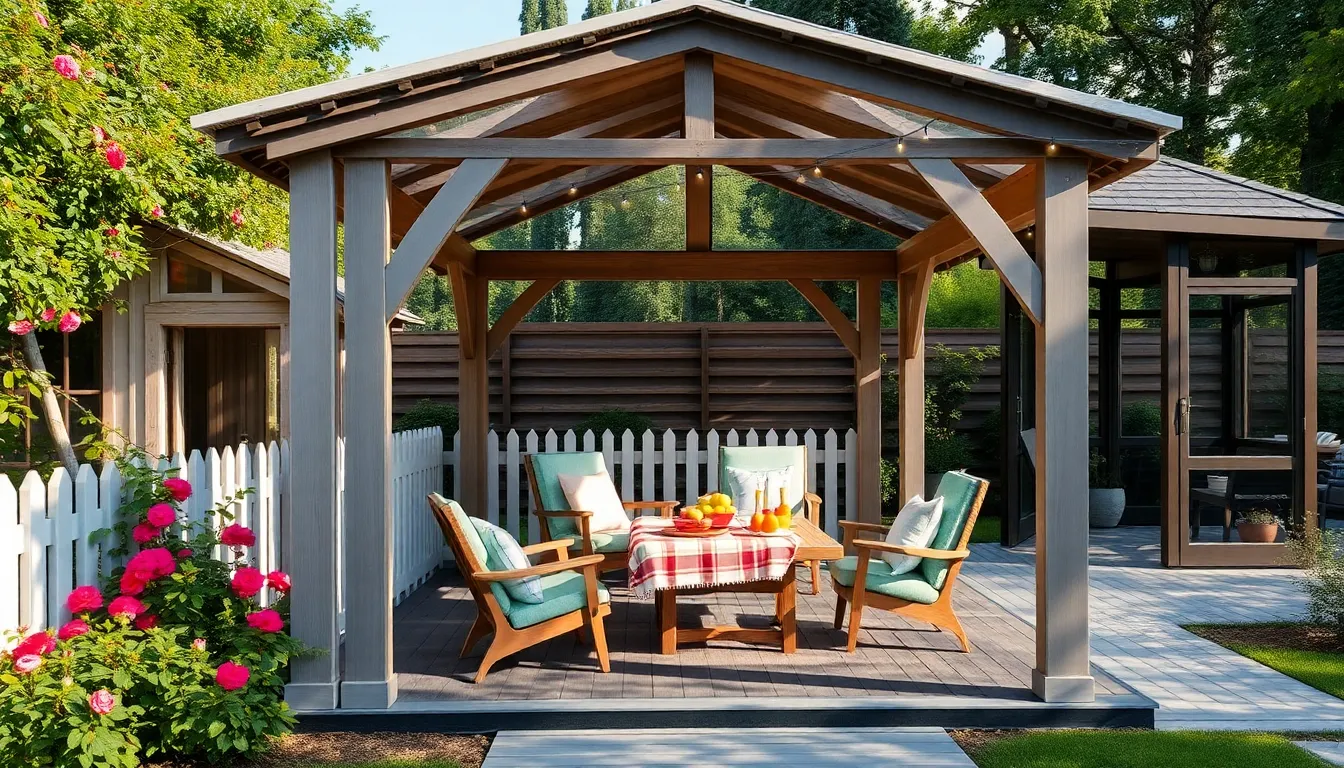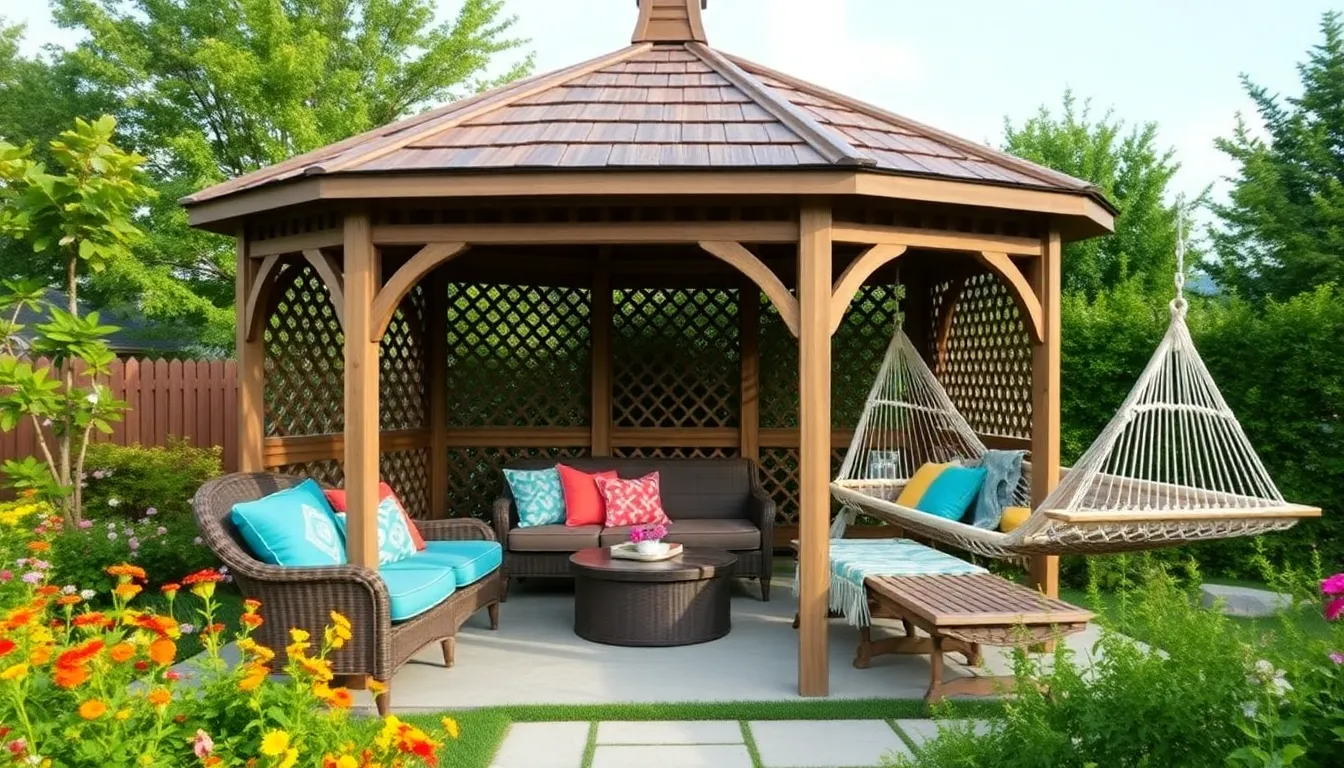Imagine stepping into your backyard and being greeted by a stunning gazebo that not only elevates your outdoor living space but also stands resilient through the seasons. Whether you’re just beginning your journey in transforming your garden oasis or you’re a seasoned expert perfecting your outdoor retreat, understanding the best materials for a gazebo frame is key to creating a space that combines beauty with durability.
In this guide, we’ll explore the various options available, empowering you with the knowledge to make confident choices that suit your style and needs. From the timeless charm of wood to the modern elegance of metal, discover materials that promise longevity and low maintenance, ensuring your gazebo remains a cherished centerpiece for years to come. Get ready to unlock the potential of your outdoor area, creating a haven where cherished moments are made, and nature’s beauty is celebrated every day.
Classic Wooden Pavilion (Cedar Wood Frame)

Choosing a classic wooden pavilion with a cedar wood frame offers both durability and a timeless aesthetic. Cedar is naturally resistant to rot and insects, making it an excellent choice for outdoor structures. For beginners, consider using pre-cut kits available at many home improvement stores, which simplify the construction process without sacrificing quality. For a more customized design, invest in high-quality cedar planks and incorporate decorative elements like lattice panels or carved post caps to enhance the pavilion’s visual appeal.
When planning your pavilion, it’s essential to select the right dimensions that suit your outdoor space; a standard size of 10×12 feet is often suitable for most backyards. Cedar wood is lightweight yet sturdy, allowing for creative design choices, such as integrating a pergola-style open roof or adding a ceiling fan for airflow. To ensure stability, use galvanized steel brackets for joint reinforcement, and anchor the frame securely to a concrete base. By incorporating these advanced tips, even seasoned DIY enthusiasts can elevate their outdoor living area with a pavilion that combines both form and function.
Modern Minimalist Gazebo (Stainless Steel Structure)

Embracing a modern minimalist aesthetic, a stainless steel gazebo offers a sleek and long-lasting option for your outdoor space. **Stainless steel is highly resistant to rust and corrosion**, making it an excellent choice for regions with varying weather conditions. For a clutter-free look, opt for clean lines and a simple roof design, such as a flat or gently sloping structure. Beginners should ensure that the frame is securely anchored to a sturdy base, such as a concrete slab or wooden deck, to maintain stability.
For those looking to elevate their design, consider incorporating **tempered glass or polycarbonate panels** in the roof or side walls to add a contemporary touch while allowing natural light to filter through. Advanced DIY enthusiasts might explore integrating LED lighting strips along the gazebo’s frame for evening illumination. When selecting dimensions, a standard size of 10×10 feet offers ample space for a dining set or lounge chairs, but ensure it complements the scale of your garden or patio. **Regular maintenance** involves wiping down the frame with a damp cloth and mild detergent to retain its pristine appearance.
Rustic Country Gazebo (Reclaimed Barnwood)

Using reclaimed barnwood for a gazebo frame brings a touch of rustic charm to any backyard. This material is not only environmentally friendly but also provides a unique, weathered look that complements a country-style garden. Ensure the wood is properly treated for outdoor use to prevent rot and insect damage. A key tip for beginners is to source barnwood from reputable suppliers who can verify its durability and history, helping you achieve that authentic rustic aesthetic.
For construction, consider a simple post-and-beam design to highlight the character of the reclaimed wood. Advanced DIYers might incorporate traditional joinery techniques, like mortise and tenon, for added stability and visual appeal. Dimensions can vary based on your space, but a common size for a cozy, functional gazebo is around 10×10 feet. Pair the structure with natural elements like climbing plants or vintage-style hanging lanterns to enhance its countryside allure. Remember, the key is to embrace the imperfections in the wood to create a truly personalized outdoor retreat.
Contemporary Open-Air Design (Powder-Coated Steel)

For a modern twist on outdoor living spaces, consider a gazebo with a contemporary open-air design crafted from powder-coated steel. This material offers a sleek, industrial look that complements modern architecture and is highly durable against the elements. To enhance both durability and style, opt for a powder coating in neutral tones like charcoal or matte black, which resists rust and corrosion while maintaining a clean aesthetic.
When planning your installation, ensure the frame is sturdy enough to support various roofing options, from polycarbonate panels to retractable fabric covers. A well-designed open-air gazebo should integrate seamlessly into your landscape, so consider incorporating features like integrated lighting or minimalist railings. For advanced designers, using modular components allows for customization, ensuring your gazebo fits perfectly within your outdoor space dimensions and design vision.
Traditional Asian-Inspired Pagoda (Bamboo Frame)

For a touch of traditional elegance, consider a Traditional Asian-Inspired Pagoda with a bamboo frame. Bamboo is not only sustainable but also incredibly strong, making it an ideal choice for outdoor structures. Beginners can start with a simple design using prefabricated bamboo beams, ensuring the frame is securely anchored to the ground with concrete footings for stability. Advanced builders might opt to integrate decorative elements such as carved wooden details or a tiered roof, capturing the essence of Asian architecture.
When constructing your bamboo pagoda, ensure the bamboo is treated for weather resistance to prolong its lifespan. Use galvanized steel connectors to join bamboo poles, which provides additional strength against wind and weather. For an authentic look, consider a roof made of lightweight materials like thatch or polycarbonate panels, which allow natural light to filter through. Regular maintenance, such as reapplying protective finishes annually, will keep your pagoda looking fresh and durable for years to come. This balance of nature and design offers a serene retreat in any garden setting.
Conclusion: Creating Beautiful Outdoor Spaces
In exploring the best materials for a gazebo frame, we’ve uncovered five key concepts that mirror the foundations of strong relationships. Firstly, durability mirrors the resilience needed in connections, ensuring they withstand the tests of time. Secondly, maintenance reflects the ongoing care and effort required to keep relationships thriving. Thirdly, aesthetics remind us of the importance of nurturing the beauty within our bonds. Fourthly, cost emphasizes the value of investing wisely in our emotional resources. Finally, sustainability highlights the significance of making choices that benefit our long-term happiness.
As an actionable step, consider assessing your relationship’s current “frame.” Is it durable, well-maintained, and aesthetically pleasing? This reflection can guide your next steps in strengthening your connection.
Don’t forget to save or bookmark this article as a handy reference for both your gazebo-building journey and your relationship growth.
By focusing on these core principles, you are setting the stage for a future of robust and flourishing relationships. Remember, the effort you invest today lays the groundwork for success tomorrow. Keep nurturing your connections, and they’ll stand as beautifully enduring as the most well-crafted gazebo.





